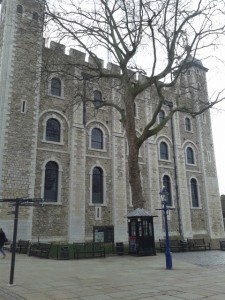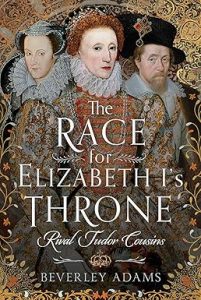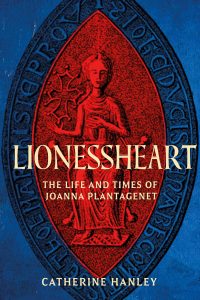July 19th was the 461st anniversary of the end of Queen Jane’s reign.
In November last year, Dr Stephan Edwards announced on his website, Some Grey Matter, his discovery of two letters that mention Jane. Edwards writes that, ‘To my knowledge, neither of these letters has ever been published in English, and no historian writing on the subject of Jane Grey or the succession dispute of 1553 has ever cited them. They are presented here for what I believe is the first time in the modern era.’ (1)
The letters appear in the third volume of ‘Lettere di Principi’ a series of ‘a collection of letters to, from, or about a wide variety of early-sixteenth-century European rulers, noblemen, and princes of the Roman Catholic Church’ (2), which was published, in 1577 by Giordano Ziletti. According to Edwards, the author and recipient of the letters are unknown but he thinks that they were written by a member of the Venetian diplomatic embassy.
I thought that it would be a good time to look at what, if anything these new letters add to our knowledge of Jane at the Tower of London on the day her reign ended.
I have used sources that are available to me, so if I have missed any, please let me know.
This is the translation of a section of the first letter, dated or written on 24th July 1553.
‘The Duke of Suffolk made the same proclamation in the Tower unrestrained, [and] being commanded to come out without arms, to go to the house of the Lord Treasurer, he was obedient. Jane, Guildford, the Duchess of Northumberland, and a few others remained in custody in the Tower. When Jane was told by her father that she was no longer Queen, she responded, “This report is convenient to me, more than the other that you gave me before saying that it was agreed for me to become Queen, being, as I said to you at that time, undeserving and insufficient for that”.’ (3)
This letter tells us the following about Jane at the Tower.
• That the Duke of Suffolk told his daughter she was no longer Queen.
• Jane’s response to the news.
• That Jane, her husband and mother-in-law were left in the Tower.
Eric Ives writes that ‘unusually for a Tudor event, the one certainty is the timing and the circumstances of the ending of Jane Grey’s reign.’ (4) Contemporary accounts report how members of the Privy Council left the Tower of London and proclaimed Mary, Queen on July 19th. Although as Ives comments, few of these sources ‘even bother to mention’ Jane. (5)
The Grey Friars Chronicle, A London Chronicle by John Stow, The Wriothesley Chronicle, The Chronicle of Queen Jane and of Two Years of Queen Mary, the diarist Henry Machyn, and an anonymous report included in the Calendar of State Papers, Spain, Volume 11: 1553, do not feature Jane in their description of the events of this day. Jane’s letter to Mary (written in August 1553) does not include the end of her reign.
However, unlike the public arrival of Queen Jane at the Tower of London on 10th July, the writers of these sources would not have been in a position to witness Jane’s reaction to the end of her reign and might not have had access to those who had this information.
The author of this new letter writes that ‘Jane was told by her father that she was no longer Queen…’ (6) The two other reports that mention Jane on 19th July, agree with this. The Spanish Ambassadors wrote the following to the Emperor Charles V on 22nd July.
‘We have been assured that when the Duke of Suffolk heard that the Council had decided to confirm Queen Mary in her right, he went to the Lady Jane, who was at supper, and tore down the canopy, saying no more than that it was not for her to use it, for her position permitted her not to do so.’ (7)
De Lisle writes that ‘According to Commendone, Jane did not lose her composure as her father delivered his grim news.’ (8) Giovanni Francesco Commendone (‘a papal secretary sent by Julius III’) (9) in his 1554 account of ‘Events of the Kingdom of England,’ wrote that:
‘But before leaving, he entered the room where his daughter was sitting in state, and removing the balachin from over her head, as clear demonstration of what had to follow, he told her to do homage to my Lady Mary as to her Queen, as she had been already proclaimed, and that this place did no longer belong to her, having to submit fortune as changeable and envious of its own gifts.’ (10)
This new letter also includes Jane’s alleged reaction to the news that her reign had ended.
When Jane was told by her father that she was no longer Queen, she responded, ‘This report is convenient to me, more than the other that you gave me before saying that it was agreed for me to become Queen, being, as I said to you at that time, undeserving and insufficient for that.’ (11)
This again supports the response reported by the Spanish Ambassadors to Charles V.
‘When the Lady Jane heard of the Council’s determination, she replied that she would give it (i.e. the royal dignity) up as gladly as she had accepted it; she knew that the right belonged to Queen Mary, and the part she had played had been prepared for her without her knowledge.’ (12)
Commendone has her saying:
‘And she answered him that these words were much more convenient than those he had told her not long before, when he persuaded and advised her to accept the crown and that many men would be deemed to be wise if their shrewdness could not be judged by the results, but the test which ensues from it, shows their hand and disabuses people.’ (13) P.19
Various accounts report that Jane, Guildford and his mother remained in the Tower of London. The writer of this letter states that:
‘The Duke of Suffolk made the same proclamation in the Tower unrestrained, [and] being commanded to come out without arms, to go to the house of the Lord Treasurer, he was obedient. Jane, Guildford, the Duchess of Northumberland, and a few others remained in custody in the Tower.’ (14)
The report of 20th July, ‘Advices from England’ (the unknown author wrote that, ‘I was yesterday at the (Imperial) ambassadors’) (15) says,
‘The other Queen has renounced all her honours, and has been shut up in the Tower with her husband and the Duke’s wife, though all the rest are outside.’ (16)
In their dispatch to the Emperor on 22nd July, The Spanish Ambassadors wrote:
‘The Duchess of Northumberland, Guilford, her son, and the Lady Jane of Suffolk are detained in the Tower as prisoners, and receive sour treatment, somewhat different from that meted out to them during their eight days’ reign.’ (17)
The Chronicle of Queen Jane and of Two Years of Queen Mary, states that the Duke of Suffolk left the Tower after proclaiming Mary, Queen.
‘The duke of Suffolk being at the Towere at the making of the proclamation, and as some saye did not knowe of it, but as soone as he herd of it, he came himselfe out of the Towere, and comaunded his mean to leave their wepones behind them, sayenge that hee him selfe was but one man, and himselfe proclaimed my lady Maryes grace queene on the Towere hille, and so came into London, levinge the leiftenaunt in the Towere.’ (18)
Edwards’ newly discovered letter (dated or written on 24th July 1553) gives us another account of Queen Jane on the day her reign ended. It supports other reports that the Duke of Suffolk told his daughter that she was no longer Queen. It also gives a similar version to other accounts of Jane’s reply and that Jane, her husband Guildford and her mother-in-law, the Duchess of Northumberland were left in the Tower.
The fact that the writer had access to a report of what happened in the Tower by the 24th, shows how quickly this version of events was in circulation. The anonymous report ‘Advices from England’ which was written on the 20th has details of how Jane and the others were left in the Tower, as do the Spanish Ambassadors on the 22nd. This letter supports the earlier report by the Spanish Ambassadors (dated 22 July) and the later one by Commendone about what Jane is supposed to have said to her father in response to the news that her reign had ended. According to Ives, Commendone arrived in London on 8 August and was back in Rome by 8 September.’ (19)
Jane’s response lays the blame on others, who persuaded her to accept a crown that she had not wanted. Leanda de Lisle has questioned the truth behind the version of events given elsewhere in this letter about Jane and her mother opposing Jane’s marriage to Guildford. Jane’s words could also be part of a ‘stratagem to get a pardon.’ (20)
Sources
1. Edwards, S.< a href= http://www.somegreymatter.com/lettereintro.htm>Some Grey Matter – Lettere di Principi, le quali si scrivono o da principi, o ragionano di principi. Libro Terzo – An Introduction to this Source Date accessed: 16 July 2014
2. ibid
3. Edwards, S. Some Grey Matter – Two Letters Concerning Lady Jane Grey of England, written in London in July 0f 1553 Date accessed: 16 July 2014
4. Ives, E. (2009) Lady Jane Grey: A Tudor Mystery, Wiley-Blackwell, p.214
5. Ives, E. (2009) Lady Jane Grey: A Tudor Mystery, Wiley-Blackwell, p.215
6. Edwards, S. Some Grey Matter – Two Letters Concerning Lady Jane Grey of England, written in London in July 0f 1553 Date accessed: 16 July 2014
7. ‘Spain: July 1553, 21-31’, Calendar of State Papers, Spain, Volume 11: 1553 (1916), pp. 109-127. URL: http://www.british-history.ac.uk/report.aspx?compid=88486 Date accessed: 16 July 2014
8. De Lisle, L. (2010) The Sisters Who Would Be Queen: The Tragedy of Mary, Katherine and Lady Jane Grey, HarperPress, p.123
9. Ives, E. (2009) Lady Jane Grey: A Tudor Mystery, Wiley-Blackwell, p.29.
10. Malfatti, C.V (translator) (1956), The Accession Coronation and Marriage of Mary Tudor as related in four manuscripts of the Escorial, Barcelona, p.19
11. Edwards, S. Some Grey Matter – Two Letters Concerning Lady Jane Grey of England, written in London in July 0f 1553 Date accessed: 16 July 2014
12. ‘Spain: July 1553, 21-31’, Calendar of State Papers, Spain, Volume 11: 1553 (1916), pp. 109-127. URL: http://www.british-history.ac.uk/report.aspx?compid=88486 Date accessed: 16 July 2014
13. Malfatti, C.V (translator) (1956), The Accession Coronation and Marriage of Mary Tudor as related in four manuscripts of the Escorial, Barcelona, p.19
14. Edwards, S. Some Grey Matter – Two Letters Concerning Lady Jane Grey of England, written in London in July 0f 1553 Date accessed: 16 July 2014
15. Spain: July 1553, 16-20′, Calendar of State Papers, Spain, Volume 11: 1553 (1916), pp. 90-109. URL: http://www.british-history.ac.uk/report.aspx?compid=88485 Date accessed: 16 July 2014
16. ibid
17. ‘Spain: July 1553, 21-31’, Calendar of State Papers, Spain, Volume 11: 1553 (1916), pp. 109-127. URL: http://www.british-history.ac.uk/report.aspx?compid=88486 Date accessed: 16 July 2014
18. Nichols, J. G (ed) (1850) The Chronicle of Queen Jane and of Two Years of Queen Mary and Especially of the Rebellion of Sir Thomas Wyatt, Written by a Resident in the Tower of London, Llanerch Publishers, p.12
19. Ives, E. (2009) Lady Jane Grey: A Tudor Mystery, Wiley-Blackwell, p.29
20. De Lisle, L. http://blog.leandadelisle.com/post/67943904298/this-is-a-good-close-up-of-frances-brandon-mother Date accessed: 27 May 2014





































